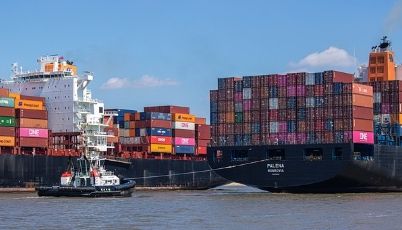How Does DAP (Delivered at Place) Optimize the Logistics of International Trade?
DAP, or Delivered at Place, is a widely utilized Incoterm in international trade that outlines a high level of responsibility for sellers, making it a preferred term for buyers looking for simplicity in logistics management. Under DAP terms, the seller is responsible for all costs and risks involved in delivering goods right up to a named destination, which can be any place, typically the buyer’s premises or another agreed-upon location. This detailed exploration will cover the operational mechanisms, benefits, and critical considerations of using DAP in global trade transactions.

Operational Mechanisms of DAP
1. Seller’s Responsibilities: Under DAP terms, the seller is responsible for arranging carriage and delivering the goods, ready for unloading at the named destination. This includes all costs and risks involved in bringing the goods to the destination, excluding duties, taxes, and other official charges required for import. Additionally, the seller is not required to unload the goods.
2. Buyer’s Responsibilities: Once the goods have arrived at the agreed destination, the buyer is responsible for unloading the goods and handling all import duties, taxes, and other official fees. Furthermore, any costs and risks associated with unloading the goods and clearing them for import fall under the buyer’s purview.
3. Transfer of Risks: The risk is transferred from the seller to the buyer as soon as the goods are made available for unloading at the named destination. This precise point of risk transfer is crucial as it influences the insurance responsibilities of the involved parties.
Benefits of DAP
1. Simplicity for Buyers: DAP simplifies the buying process as the buyer doesn’t have to deal with transport risks or arrange for international shipping. This term is particularly advantageous for buyers unfamiliar with the complex logistics involved in international transport.
2. Control Over Shipping for Sellers: Sellers can control the shipping process up to the final destination, which is beneficial when managing products that require careful handling or coordination. This control helps in maintaining the condition and timely delivery of goods.
3. Cost Predictability: With most transportation costs and risks borne by the seller, buyers can predict their costs more accurately, especially concerning the final stages of delivery. They need only to focus financially on import duties and unloading once the shipment arrives.
Strategic Considerations
1. Insurance Coverage: While DAP terms do not require the seller to insure the goods, considering the extent of their responsibilities, sellers often opt to insure the goods to mitigate the risk of loss or damage until the delivery point. Buyers should ensure that their insurance covers the period from the point of unloading and onwards.
2. Customs and Compliance: Sellers must ensure compliance with all export formalities, while buyers handle the import customs clearance and associated duties. Both parties need to be well-versed in the local customs regulations to avoid delays and penalties.
3. Dispute Management: Since DAP can lead to ambiguities regarding the condition of goods at the point of unloading, it's essential to have clear terms and documentation regarding the state of goods upon arrival and during unloading. Effective communication and detailed contracts can help mitigate potential disputes.
Conclusion DAP is a robust Incoterm that facilitates a smoother transaction process in international trade by allocating responsibilities that ensure the goods are delivered directly to a designated place, minimizing hassle for the buyer while allowing the seller to maintain control over the transport process. This term is particularly beneficial for ensuring efficiency in complex logistics operations, making it a popular choice in global commerce strategies.
Related articles

 WeChat of CBiBank
WeChat of CBiBank